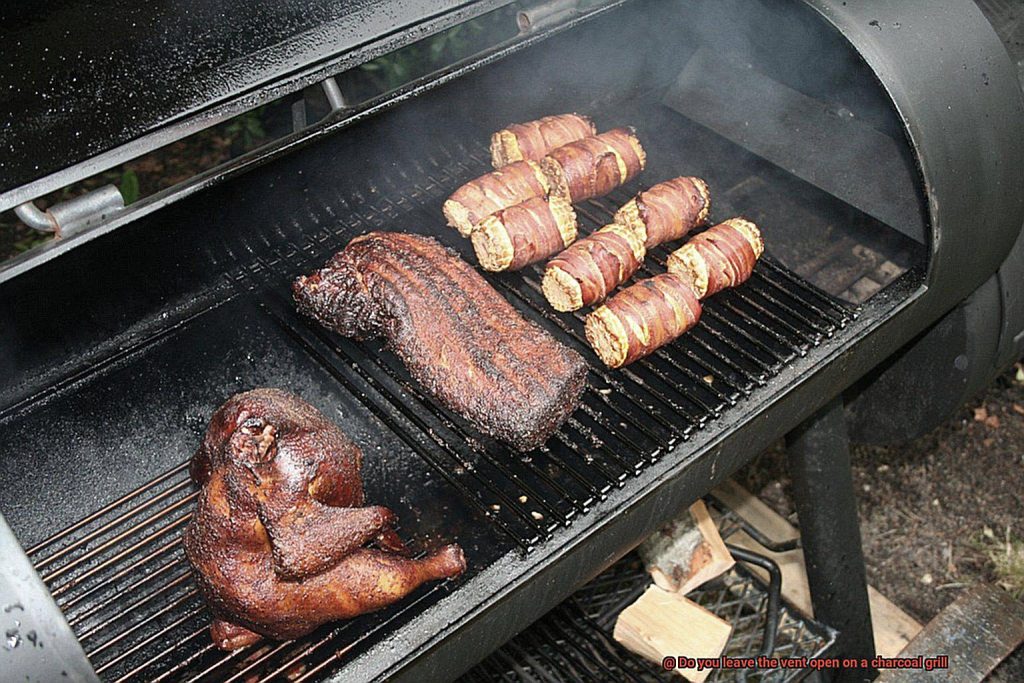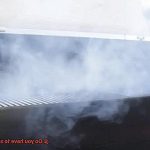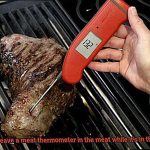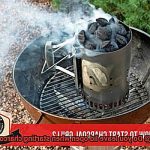Ah, summer. The season of sunshine, outdoor activities, and most importantly, grilling. And what’s better than the aroma of charcoal grilling filling up your backyard? But let’s be honest, there’s always been a bit of confusion about how to use the vents on charcoal grills. Should you leave them open or closed?
If you’ve found yourself pondering this question, don’t worry – you’re not alone. Grilling enthusiasts have debated this topic for ages, each with their own opinion on the matter. So what’s the verdict?
In this article, we’ll take a deep dive into the world of charcoal grilling and explore whether leaving the vent open or closed affects your barbecue experience. We’ll discuss the pros and cons of both methods and how they impact the temperature and flavor of your food. So get ready to become a grill master as we uncover whether you should keep that vent open or closed on your next cookout.
Contents
Benefits of Leaving the Vent Open
Firstly, leaving the vent open helps regulate the temperature inside your grill. By allowing air to circulate freely and oxygen to fuel the fire, you can achieve the ideal temperature for your grilling needs. With increased airflow, your coals will burn hotter, ensuring successful grilling every time. Say goodbye to temperature fluctuations and hello to perfectly cooked food.
In addition to temperature regulation, leaving the vent open can also prevent flare-ups. Flare-ups occur when fat or juices from your food drip onto the coals and ignite. By leaving the vent open, excess heat and smoke can escape, reducing the likelihood of flare-ups and ensuring even cooking. You’ll be able to cook your food evenly without worrying about any sudden flare-ups ruining your hard work.
But that’s not all – leaving the vent open can also enhance the flavor of your food. The smoke produced by burning coals infuses your food with a delicious smoky taste. Leaving the vent open allows this smoke to circulate around your food and permeate every inch of it, resulting in a mouth-watering flavor that will have your taste buds dancing. Your guests will be amazed at how delicious your food tastes.
Lastly, leaving the vent open can help keep your grill clean. When you close the vents, moisture can accumulate inside the grill, leading to mold growth and other unpleasant odors. By leaving the vent open, you allow air to circulate, keeping your grill dry and odor-free. So not only will your food taste great, but your grill will smell fresh and clean as well.
Potential Problems with Leaving the Vent Open
As you prepare for your next backyard cookout, the question of whether to leave the vent on your charcoal grill open or closed may arise. While it may seem like leaving the vent open is the easy solution, it’s important to be aware of the potential problems that can arise from doing so.
One of the main issues that can arise from leaving the vent open is uncontrollable high temperatures. The free flow of air caused by an open vent can cause the coals to burn faster and hotter than intended, which can affect the taste of your food and even pose a safety hazard. Nobody wants their meal to turn into a piece of charcoal or worse yet, start a fire in their backyard.
Another potential problem with leaving the vent open is flare-ups. When grease drips onto hot coals, it can ignite and cause flames to shoot up. If the vent is left open, it increases the oxygen flow and intensifies the flames. This not only poses a danger, but it can also ruin your perfectly cooked meal.
Leaving the vent open can also affect the cooking time of your food. If the temperature is too high, your food may cook too quickly on the outside while remaining raw on the inside. This is especially true for thicker cuts of meat like steaks or roasts. To avoid serving up an undercooked meal, regulating airflow with the vent is crucial for even cooking.
Lastly, leaving the vent open can affect the amount of smoke produced by your grill. Smoke adds flavor to your food, and by leaving the vent open, you may not be getting enough smoke to enhance the taste. Controlling airflow with the vent allows you to adjust smoke production and give your food that delicious smoky flavor.
When to Leave the Vent Fully Open
As any grill master knows, airflow is a key factor in achieving that perfect sear on your food. That’s where the vents on your charcoal grill come in – they play a crucial role in regulating the temperature and ensuring your coals burn evenly. So, let’s dive into when to leave the vent fully open for optimal cooking results.
When you’re first lighting the coals, it’s best to leave the vent fully open. This allows maximum airflow, which quickly and evenly ignites the coals. Once they’ve reached your desired temperature, you can start adjusting the vents to control the heat.
If you need to increase the temperature inside your grill, partially close the vents to restrict airflow. This traps heat inside and causes the coals to burn hotter. Need to lower the temperature? Open those vents back up to allow more airflow and cool things down.
But what about those high-temperature dishes like steak or pizza? In these cases, leaving the vent fully open throughout the cooking process ensures that there’s enough oxygen to keep those coals burning hot.
When to Close the Vent Partially
Charcoal grilling is more than just a cooking method; it’s an art form. Achieving that perfect smoky flavor and sear requires precise control over the grill’s airflow, and the vents play a crucial role in regulating the temperature. But what happens when you need to adjust the temperature mid-cook? That’s where partially closing the vent comes in.
There are several scenarios where partially closing the vent can be helpful. For example, when grilling a thick steak, you may need to sear it on high heat while maintaining a consistent temperature on the inside. Partially closing the vent allows the charcoal to burn hotter, creating a crisp exterior on the steak without overcooking the inside.
Conversely, when cooking lower-heat items like chicken or vegetables, partially closing the vent reduces the oxygen feeding the fire, preventing burning and ensuring even cooking. Additionally, partially closing the vent can help extend your cooking time by slowing down the charcoal’s burning rate and maintaining a consistent temperature.
However, it’s essential to monitor your grill regularly. Keeping the vent closed for too long can lead to a fire that’s too hot or too cold, affecting your food’s taste and texture. Therefore, understanding how partially closing the vent affects airflow and temperature is vital to achieving better results and cooking your food precisely how you like it.
Aside from adjusting temperature mid-cook, partially closing the vent comes in handy when cooking delicate items like fish or tofu that are prone to sticking or falling apart. It also helps when adjusting for wind as opening the vent all the way can make your grill too hot.
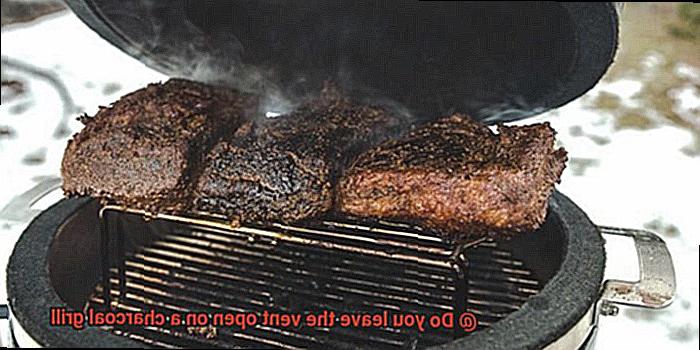
How to Adjust the Vent for Maximum Temperature Control
Grilling on a charcoal grill is an experience like no other, but achieving the right temperature can be tricky. The key to success lies in adjusting the vent for maximum temperature control. Here are some tips to help you master this technique and cook up the perfect meal:
Open both vents fully
To get started, open both vents on the bottom of the grill and the top vent all the way. This allows for maximum airflow and will help the coals ignite faster. It’s important to wait until the coals are hot before making any adjustments.
Make small adjustments
Adjusting the vent too much can cause fluctuations in temperature, making it harder to maintain a consistent heat. Instead, make small adjustments and monitor the temperature closely until you reach your desired level.
Increase or decrease temperature with the bottom vent
If you need to increase the temperature, open the bottom vent slightly to allow more oxygen into the grill. This will cause the coals to burn hotter and faster. If you want to decrease the temperature, close down the bottom vent a bit to restrict airflow and slow down the burning process.
Be patient
Adjusting the vent takes time to affect the temperature inside the grill. So, if you make a change to the vent position, give it at least 10-15 minutes before making another adjustment.
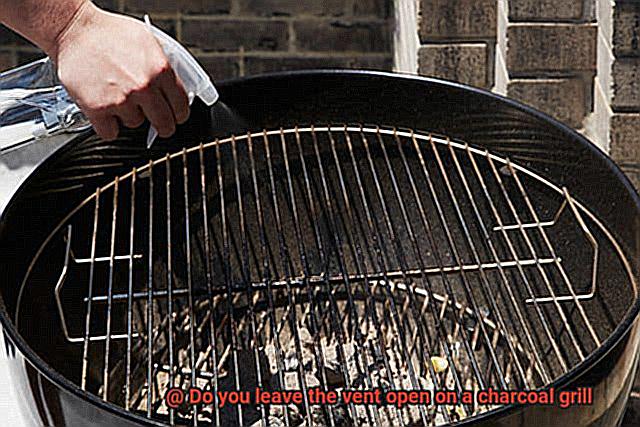
Monitor smoke production
Adjusting the vent can also affect smoke production, which can be crucial for certain recipes that require a smoky flavor. Opening the vents wider will create more smoke, while closing them will reduce smoke output.
Tips for Charcoal Grilling with Cats
Charcoal grilling is a wonderful way to cook delicious food, but it can also be hazardous if proper precautions are not taken, especially if you have a curious cat in your household. Here are some tips to help you keep your furry friend safe while you enjoy your charcoal grilling experience:
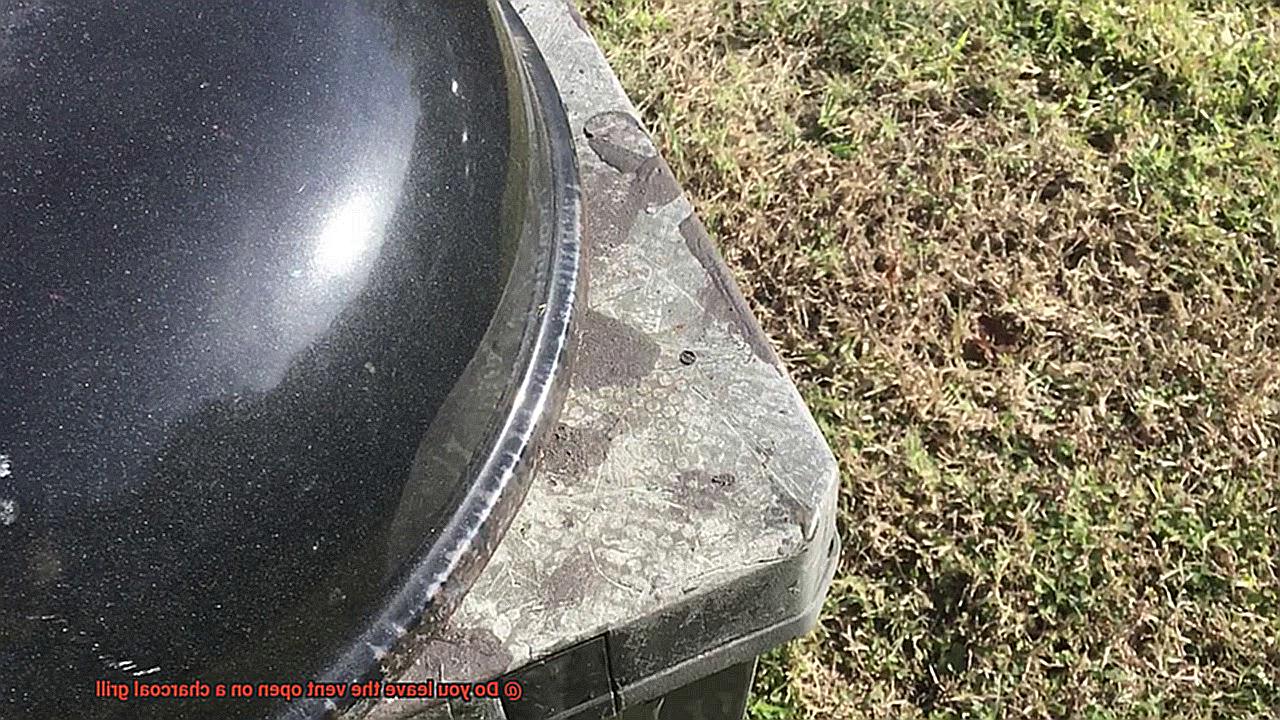
Keep Your Cat Away from the Grill
One of the most important tips for charcoal grilling with cats is to keep your cat away from the grill area at all times. You should never leave your grill unattended and always keep an eye on it while in use.
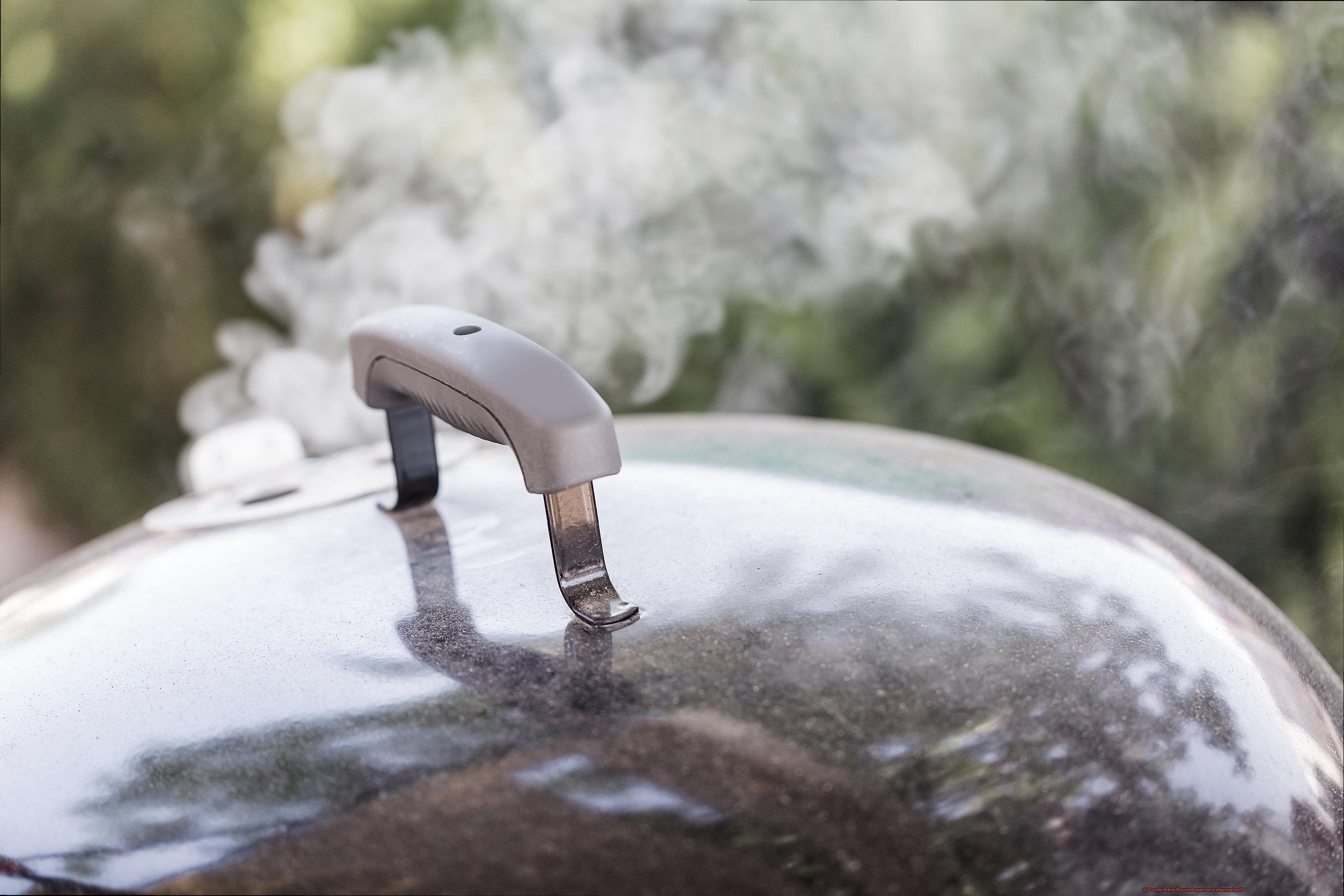
Clean Your Grill Thoroughly
After each use, make sure to clean your grill thoroughly. This will help prevent any leftover food or grease from attracting your cat’s attention and potentially causing harm.
Dispose of Charcoal Properly
Charcoal can be hazardous for your cat if ingested, so make sure to dispose of any leftover charcoal properly. Store it in a safe place where your cat cannot access it.
Use Flammable Materials Safely
If you need to use lighter fluid or other flammable materials to light your charcoal grill, make sure to do so safely and follow the instructions carefully. Keep these materials away from your cat at all times and never pour lighter fluid onto hot coals.
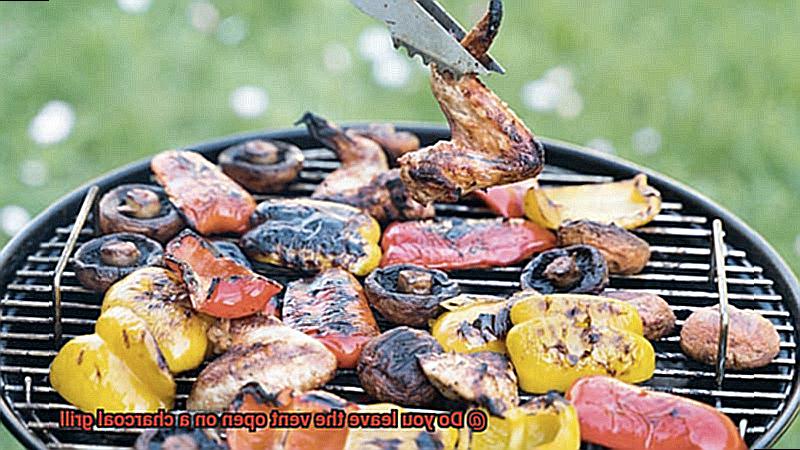
Consider the Impact of Charcoal Smoke
Smoke and fumes from a charcoal grill can be harmful to cats, so it’s important to choose a well-ventilated area for your grill. Avoid using chemical starters that produce even more toxic fumes. If you notice any signs of discomfort in your cat, move them to a different location until the smoke has dissipated.
Experiment with Ventilation
Ventilation is crucial when it comes to charcoal grilling with cats. While it’s recommended to leave the vent open while grilling to regulate temperature and prevent flare-ups, you may want to partially close the vent or use a grill cover to trap smoke and prevent it from spreading if your cat is particularly sensitive.
Safety Precautions when Grilling with Pets
Grilling with pets can be a fun experience, but it’s important to remember that their safety should always come first. So, before you fire up the grill, let’s go over some essential safety precautions to keep in mind.
Firstly, it’s crucial to keep your pets at a safe distance from the grill. Dogs and cats can easily get curious and accidentally burn themselves or knock over the grill. To prevent these situations from happening, you can keep your pets on a leash or in an enclosed area away from the grilling zone. This will not only prevent accidents but also keep them from getting too close to the cooking food.
Secondly, make sure to clean up any food scraps or grease that may have fallen onto the ground around the grill. Pets have a keen sense of smell and may try to lick or eat these scraps, which can lead to digestive issues or even poisoning. So, take an extra moment to clean up after yourself before allowing your pet near the grill.
Thirdly, never leave your pets unattended around a hot grill. Even if you think they are well-behaved and won’t cause any trouble, accidents can happen in the blink of an eye. It’s best to keep an eye on them at all times when grilling and never leave them alone near the grill.
Now, let’s talk about leaving the vent open on a charcoal grill when grilling with pets. The vent helps regulate the temperature of the grill and allows for proper airflow, which is crucial for cooking food evenly and thoroughly. However, leaving the vent open can also increase the risk of flare-ups and smoke. This can be dangerous for both your pets and yourself. To minimize this risk, keep your pets at a safe distance from the grill and avoid using too much oil or fatty meats that can cause flare-ups.
m5XSkpo6704″ >
Conclusion
To sum up, leaving the vent open on a charcoal grill can offer a host of benefits. From regulating temperature to enhancing flavor and preventing flare-ups, there are plenty of reasons to keep that vent open. However, it’s important to remember that too much of a good thing can be problematic.
Leaving the vent open for too long can result in uncontrollable high temperatures and flare-ups, which can ruin your meal and even pose a safety risk. That’s why it’s crucial to monitor your grill closely and adjust the vent as needed to achieve optimal cooking results.
If you’re grilling with pets around, safety should always be your top priority. Keep them at a safe distance from the grill, clean up any scraps or grease immediately, and never leave them unattended.
Whether you’re an experienced grill master or just starting out, understanding how to use vents on charcoal grills is key to achieving perfect results every time. So fire up that grill with confidence.

